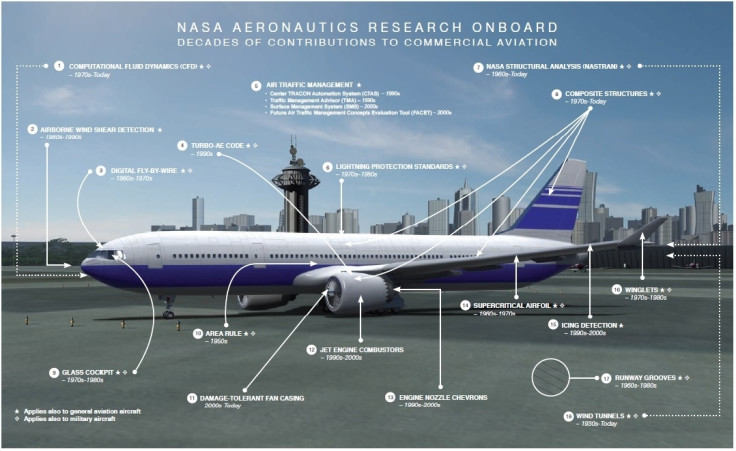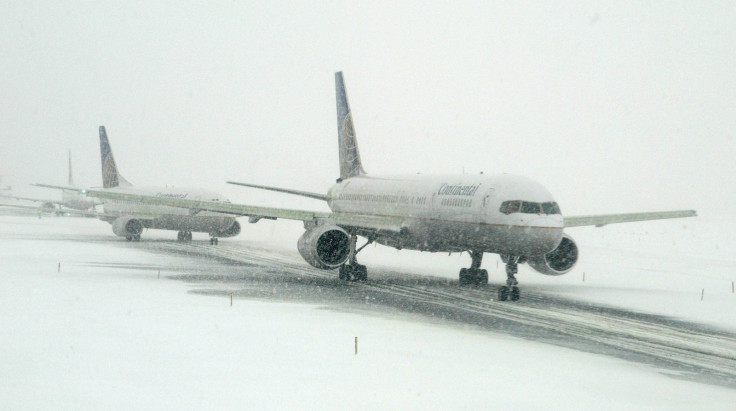10 things the aviation industry should thank Nasa for on Thanksgiving Day
The next time you are on a flight, thank Nasa for these developments.

A number of technologies developed by Nasa over the years have contributed immensely to the aviation industry. The space agency recently shared a list of innovations which has proved beneficial for the aviation sector.
On Thanksgiving Day, with thousands of people travelling home to meet their families across the world, here are 10 things Nasa came up with that help make flying safer, smoother, and more enjoyable.
Computational fluid dynamics (CFD)
CFD started off as a code that Nasa wrote to predict the flow of fluids. This could be the flow around the body and wing of an aircraft or even the flow of fuel inside the space shuttle. Nasa says that today, CFD is a vital tool in the development, designing, and testing of any type of aircraft.
Digital fly-by-wire
Fly-by-wire is a control system that almost all modern aircraft make use of. It was developed in the 1960s and 1970s. Fly-by-wire got rid of all the heavy, not-so-reliable hydraulic systems and replaced them with electronics controlled through wires. This meant all systems made use of electrical signals and pilots were able to control every surface of the aircraft with ease.
Air traffic management
Nasa is to be thanked for developing a wide range of air traffic management tools that made it possible for authorities to handle the millions of passengers that fly through hundreds of airports across the world. Traffic management advisor (TMA) developed in the 1990s, for example, makes a forecast of arriving air traffic to make it possible for operators plan safe arrivals during peak hours. Surface management systems, another Nasa innovation, provides information to air traffic controllers, alerting them on when planes arrive on the ground or at the gates.
Lightning protection standards
Nasa spent a lot of time in researching lightning — its effects on aircraft, conditions leading to strikes, and what happens in-flight when lightning does strike. A lot of this knowledge gathered by Nasa went into improving safety standards in the case of lightning strikes on aircrafts over the years.
Nasa structural analysis (Nastran)
NASTRAN is an industry standard tool when it comes to the computer-aided engineering of all types of aviation structures. It, however, started out in the 1960s as a software tool to model different types of structures that can be used in both spacecraft as well as aircraft. It was developed by Nasa and industry partners, says the space agency.
The "area rule"
Developed by Nasa scientist Richard Whitcomb, it consisted of a number of solutions to aerodynamic challenges like how to avoid the disruption in airflow which causes drag as a result of attaching wings to the fuselage. The area rule is still being used to design efficient aircraft fly at high speeds, says Nasa.
Jet engine combustors
Nasa is responsible for developing the technology that is associated with the effective burning of fuel. When fuel burns more cleanly, it reduces the pollution left behind by aircrafts, making them more environmentally responsible. These developments came from the space agency through the 1990s and early 2000s.
Icing detection
Icing is the build-up of ice along leading edges of planes. Nasa was called upon by the Federal Aviation Administration to find out more about the little-understood phenomenon called Supercooled Large Droplets (SLD). Extensive data, collected by the agency, were used to make better instruments to detect SLD.
Winglets
Nasa discovered during the 1970s and 1980s that it was possible to reduce aerodynamic drag by attaching vertical tips to the ends of wings. This helped aircraft designers to build aeroplanes without increasing wingspan. Winglets also increase range and decrease fuel consumptions, says Nasa.

Runway grooves
In the 1960's, Nasa found that cutting grooves into runways not only moved water away from the strip, it also proved to offer greater friction for aircraft as well as ground vehicles. Nasa went on to make thousands of test runs through the 1980s testing the grooves. Now, public highways in the US, swimming pool decks, refinery floors and several such slick surfaces now have grooves, thanks to Nasa.

Apart from the above-mentioned innovations, Nasa has been instrumental in the development of a lot of things related to aviation. The agency still continues to innovate with an aim to make aviation better.





















